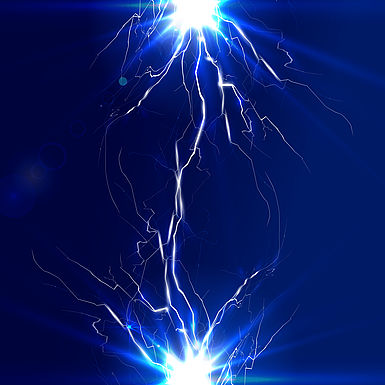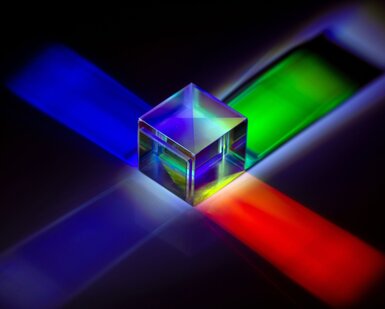Please type a search term (at least two characters)
News
EMPIR project research applications include carbon decay measurements

An award winning EMPIR project in the field of small current measurements is making impact in many diverse areas
Since its redefinition in 2019, the SI unit of electrical charge – the ampere - is now directly linked to the fixed numerical value of the elementary charge e or the magnitude of charge carried by a single electron (1.602 176 634 × 10−19C). Hence single-electron sources that generate currents by transferring an exact number of electrons per cycle enable the most straightforward method for the realisation of the revised ampere.
The aim of EMPIR project Quantum realisation of the SI ampere (15SIB08, e-SI-Amp), completed in 2019, was to produce new devices and portable systems to help disseminate the redefined ampere to the scientific community and industry.
This was highly successful, with the project results finding applications in a diverse range of areas where precise measurements of small currents are critical to success:
- The Optical Radiometric Metrology Group of the UK’s National Metrology Institute, National Physical Laboratory (NPL) has used the methods developed in the project to decrease the uncertainty of some of their calibrations by around a factor of 10. These calibrations, of sensitive current amplifiers used in optical measurement systems, help to reduce the uncertainty in the dissemination of the candela. Therefore all industries measuring light will benefit from this increased accuracy including energy saving lighting, hazard and safety lighting, computer graphics, colour pigment production, optical radiation safety and Earth Observation and Climate Change.
- Enhanced small current measurement systems were also used for resolving problems in areas also featuring small electrical currents, such as semiconductor characterisation and aerosol particle counter calibration – the latter to help improve the traceability of single-charge aerosol references that are increasingly used in environmental monitoring.
- One of the most notable advances made in the project was the generation of 4 variants of an ‘Ultrastable Low-noise Current Amplifier’ (ULCA) originally created during the earlier EMRP project Realisation of the new SI ampere (Qu-Ampere, SIB07). This potent metrological tool is a highly stable, portable current measurement and generation standard which earned the group who developed it at Germany’s National Metrology Institute, PTB, the prestigious Helmholtz prize in 2018. During the later EMPIR project the ULCA was circulated between the project’s partners - demonstrating that this device enables measurement uncertainties over a wide range of small currents (1 femtoampere to 1 microampere) that are at least a factor 10 more accurate than the best uncertainties available before the project with a transportation stability at the level of 1 ppm or better. This instrument, now being commercialised by Magnicon under license from PTB, was used by a major lighting manufacturer to reduce the companies calibration uncertainties by up to two orders of magnitude.
- Dr. Stephen Giblin of the Quantum Electrical Metrology Group at NPL, in collaboration with scientists in the NPL Nuclear Metrology Group, is now investigating the use of the ULCA for improved carbon 14 (C14) half-life measurements. C14 decays to ordinary carbon (C12) over a very long time period - around 5700 years. Measuring this decay in a conventional ionization chamber requires resolving a change in current of around 1 femtoampere (10-15 A) per week, which was not previously possible. With the small current measurement technology developed in the project, it is now feasible, and the NPL scientists are investigating whether an improved value for the half-life of C14 can be measured. Not only are C14 measurements important in archeology to date artifacts, but they are also an important component in reconstructing the earth’s past climate and therefore in understanding our current period of unprecedented climate change.
The techniques developed in the project are now being applied to in the current EMPIR project Single-electron quantum optics for quantum-enhanced measurements (SEQUOIA, 17FUN04) which is looking at fabricating semiconductor-based devices exploiting quantum properties of individual electrons for innovative sensors and other components, such as single-electron interferometers.
The project was coordinated by Masaya Kataoka (NPL) who said about the work:
“Our stories of stakeholder engagement show examples of what European collaboration of a metrology community can do for other metrology and industrial communities. Our work, connecting the quantum realisation of ampere to industrial applications, was not possible without close working amongst project partners with various expertise.”
EMPIR projects are co-funded by the European Union's Horizon 2020 research and innovation programme and the EMPIR Participating States.
EMRP joint research projects are part of EURAMET’s European Metrology Research Programme. The EMRP is jointly funded by the EMRP participating countries within EURAMET and the European Union.
Want to hear more about EURAMET?
Sign up for EURAMET newsletters and other information
Follow us on LinkedIn and Twitter
Carbon dioxide, released from man-made activities, is lowering the pH of the Earth’s oceans, and impacting the health of marine organisms worldwide more
Supporting automated and reconfigurable manufacturing systems more
Working with external project Cool White to test and suggest improvements on the locally available white paints more
The project FutureEnergy has provided new calibration services for ultra-high voltages and a good practice guide on Lightning Impulse dividers more
For many of the 5000 photonics companies in Europe a precise knowledge of a material’s optical properties is vital for industrial competitiveness more





